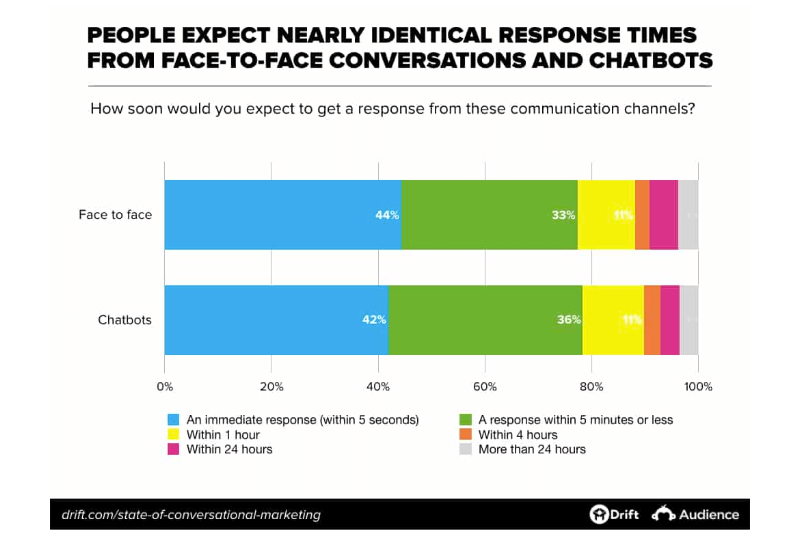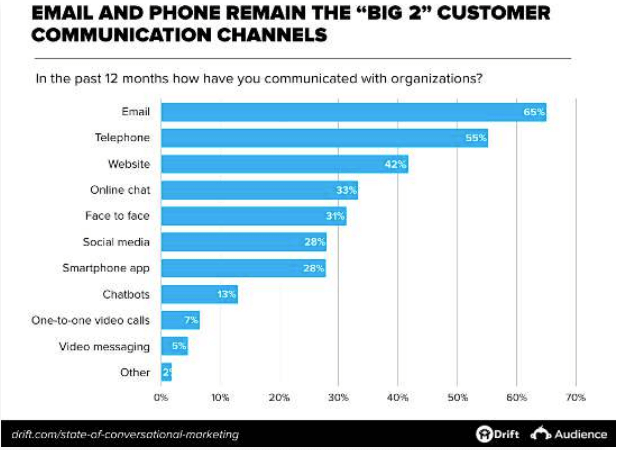Email and phone communications dominate conversational martech, but chat isn’t far behind
- Fahad H

- Jul 17, 2019
- 2 min read
Conversational marketing technology, including chatbots, has exploded across the martech industry over the past 18 months, and consumer expectations are reflecting its impact. Findings from a recent survey of more than 1,000 consumers by Drift and SurveyMonkey Audience indicate that the ability to quickly communicate with brands to solve customer issues is among the top priorities for online shoppers.
Conversational marketing is an essential component to digital strategies today; companies need to continually improve their 1:1 customer engagements in order to maintain a competitive edge.
Why we should care
Brands that have been hesitant to jump into chatbots will find themselves playing catchup to when it comes time to implement the technology in order to meet the growing needs of consumers. Nearly half of consumers (44%) surveyed expect a response in a face-to-face interaction within five seconds, while 42% indicated the same response time from a chatbot.

Source: 2019 State of Conversational Marketing
Despite increased consumer expectations, chatbots and online chat windows are not consumers’ top picks: according to the survey, email (65%) and telephone (55%) are the primary communication channels for communicating with brands over the past 12 months. One-third of respondents indicated that they have used online chat over the same time period, but as it becomes increasingly accessible that number can be expected to grow over the next year.

Source: 2019 State of Conversational Marketing
Integrated martech gives digital marketers the opportunity to use these channels to take a more customer-centric approach to conversational marketing. The top frustrations cited by the survey included not being able to find answers quickly on websites.
Enabling customer service representatives (on the phone or online chat) access to real-time customer data to resolve incoming requests can drastically improve the customer’s experience. Identifying and implementing the necessary integrations to execute this could be a key differentiator in brands’ customer interactions.
Additional survey findings:
14% of those surveyed would rather use a chatbot than submit a webform.
Consumer frustrations grew over the past year with brands not providing 24/7 customer service. They also struggle to find basic information quickly and easily on brands’ websites.
The survey also revealed that consumers prefer communicating with a live person — regardless of the channel — is a better customer experience than dealing with a chatbot.








Comments